Upper Eyelid Filler: The Procedure, Risks, and Results
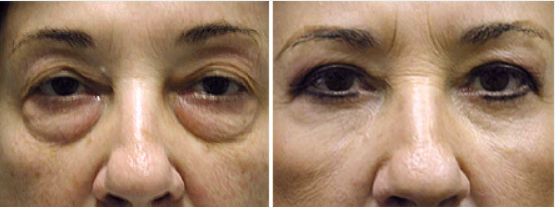
Upper eyelid filler is an increasingly popular cosmetic procedure that can help individuals look refreshed and rejuvenated. With the potential to reduce wrinkles and sagging skin, improve hooded eyes, and add volume to the upper lid area, it is no wonder that so many people are flocking to this treatment. However, it’s crucial for those considering upper eyelid filler to understand the potential risks associated with the procedure and realistic expectations for results.
ANATOMY OF EYELID/ORLBIT
Learning about the retina and orbit is crucial to evaluating a potential filler eyelid injection patient. The thinness of the eyelid skin and the boney anatomy of the orbits is vital in selecting filler for the eyelid.
Diagnostic Procedures The patient must give an exhaustive history of previous surgeries and treatments. An angular vessel is always proximally avoided during the insertion of a tear tube. Pretarsal eyelids are prescribed because skin thickness increases the chances of the Tyndall effect.
INDICATIONS FOR EYELID
The eyelids are a vital part of the eye and help protect it from dirt, dust, and other potential irritants. The eyelids also help to keep the eye moist and lubricated. When the eyelids are not functioning correctly, it can cause many problems, including dryness, irritation, and blurred vision.
Some different conditions can affect the eyelids. Common eyelid conditions include eyelid ptosis, when the eyelid droops down, and eyelid dermatitis when the eyelid becomes red and inflamed.
Eyelid conditions can also be broadly classified according to their location on the eyelid. The eyelid margin is the rim of the eyelid that contains the eyelashes. The eyelid skin is the thin outer layer of the eyelid. The eyelid mucosa is the inner lining of the eyelid.
Conditions that affect the eyelid margin include:
* Blepharitis: an inflammation of the eyelid margins that can cause redness, itching, and burning
* Demodex: a type of mite that lives on the skin
* Styes: an infection of the eyelid oil glands
* Dry eye: a condition when the eyes don’t produce enough tears
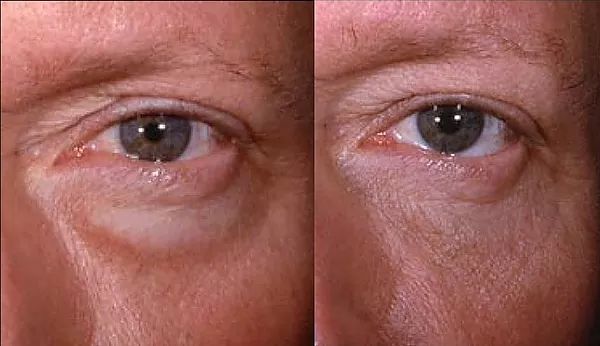
Conditions that affect the eyelid skin include:
* Atopic dermatitis: a kind of eczema that is often associated with itching and redness
* Shingles: reactivation of the chicken pox virus, which can cause a painful rash
* Contact dermatitis: an irritation of the skin that can be caused by contact with chemicals or plants
* Cysts: tiny sacs filled with fluid that can form in the skin
* Eyelid tumors: abnormal growths of cells in the eyelid
* Allergies: an abnormal response to a substance that causes itching and swelling
* Psoriasis: a chronic skin disorder that causes red, scaly patches on the skin
TYPES OF PRODUCTS
One of the most popular procedures today is using upper eyelid filler. This minimally-invasive treatment can help to improve the appearance of drooping or sagging eyelids, giving you a more youthful look.
Several different types of upper eyelid filler are available on the market today. Each filler type has advantages and disadvantages, so choosing the right one is essential.
Below are some of the types of upper eyelid filler:
1. Hyaluronic acid-based fillers:
These fillers are made of a substance naturally produced by your body. They are safe and effective but may only last for a short time as other fillers.
2. Collagen-based fillers:
Collagen is a protein found in your skin. These fillers are made from this protein, which is very safe and effective. However, they may last less time than other types of fillers.
3. Fat-based fillers:
These are made from the fat taken from a patient’s body. They are relatively long-lasting but may provide a different degree of improvement than other fillers.
4. Semi-permanent fillers:
These are made from a synthetic material that your body will not absorb over time. They are relatively long-lasting but may provide a different degree of improvement than other fillers.
5. Hyaluronic acid-based fillers:
Hyaluronic acid is a natural substance in your skin. These fillers are made from this substance and are very safe and effective. However, they may last less time than other types of fillers.
Various upper eyelid filler options are available, each with advantages and disadvantages. The best choice for a given patient will depend on many factors, including the desired result, the patient’s budget, and individual preferences. A qualified dermatologist or plastic surgeon can help patients choose the best upper eyelid filler.
TECHNIQUES
Aging affects not only our face but also our entire body’s function. We get wrinkles, and our skin becomes thinner and less elastic. The adipose tissue around our eyes can cause the upper eyelid to sag, making us look tired and aged. The same goes for the fatty tissue around our eyes.
The filler can help improve the upper eyelid’s appearance by adding volume to the area and lifting the lid. It also helps reduce the appearance of wrinkles and fine lines.
Several techniques are used to deliver the filler to the upper eyelid. The method will depend on the type of filler used and the desired results.
We will explore the different techniques in this post used to deliver upper eyelid filler. We will provide an overview of the advantages and disadvantages of each method and suggest how to select which option is best for you.
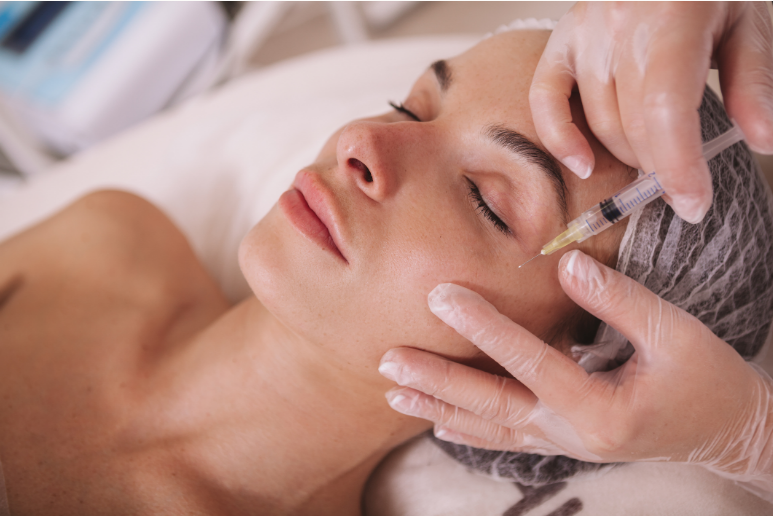
1. Direct Injection:
This is the most common technique to deliver filler to the upper eyelid. It involves the injection of the filler directly into the desired area of the eyelid. Advantages include excellent precision, accuracy, and fast and easy results. Disadvantages include a risk of bruising and swelling and the potential for patients to experience a burning sensation at the injection site.
2. Threading:
A thin, flexible needle injects the filler into the skin. This technique has the advantage of creating smaller, finer lines and can reduce the amount of bruising and swelling. However, it is a more complex technique than direct injection and can take longer.
3. Halo:
This technique uses a machine to create a circular ring of tiny injections around the eyelid to deliver the filler. This technique is more accurate and precise than direct injection and can provide a more even fill distribution. The disadvantage is that it can cause more bruising and swelling than other techniques.
4. Mesotherapy:
Mesotherapy is a technique that involves injections of hyaluronic acid filler mixed with vitamins and other active ingredients into the skin. This technique is used to treat fine lines and wrinkles and to improve skin texture and tone. The advantage is that it can provide longer-lasting results than other techniques. The disadvantage is that it can be costly and time-consuming.
Many techniques can be used to achieve individual goals and objectives. We have discussed some of the most popular methods in this article. Each style has advantages and disadvantages, so choosing the right one is vital. If you are still determining which suits you, consult a qualified esthetician or doctor.
INTRODUCTION
The filler for the upper eyelid process involves injecting a synthetic filler material into the upper eyelid to add volume and minimize the looks of wrinkles.
Upper eyelid filler is a safe and effective procedure with few risks. The most typical side effects are temporary and can be easily treated. The process results are typically long-lasting, though touch-ups may be required every few years to maintain the results.
Consider upper eyelid filler and learn more about the procedure, risks, and results.
THE PROCEDURE
Upper eyelid filler is a minimally invasive procedure that requires no incision or surgery. It is usually done using one of two injectable products; hyaluronic acid-based fillers (such as Restylane or Juvéderm) or fat grafts. It takes around 30-60 minutes, depending on the product used.
The procedure itself is relatively simple. The filler product is injected into the upper eyelid area, directly into the areas of volume loss. Once the product is injected, it immediately starts to volumize and lift the area, reducing wrinkles and adding fullness.
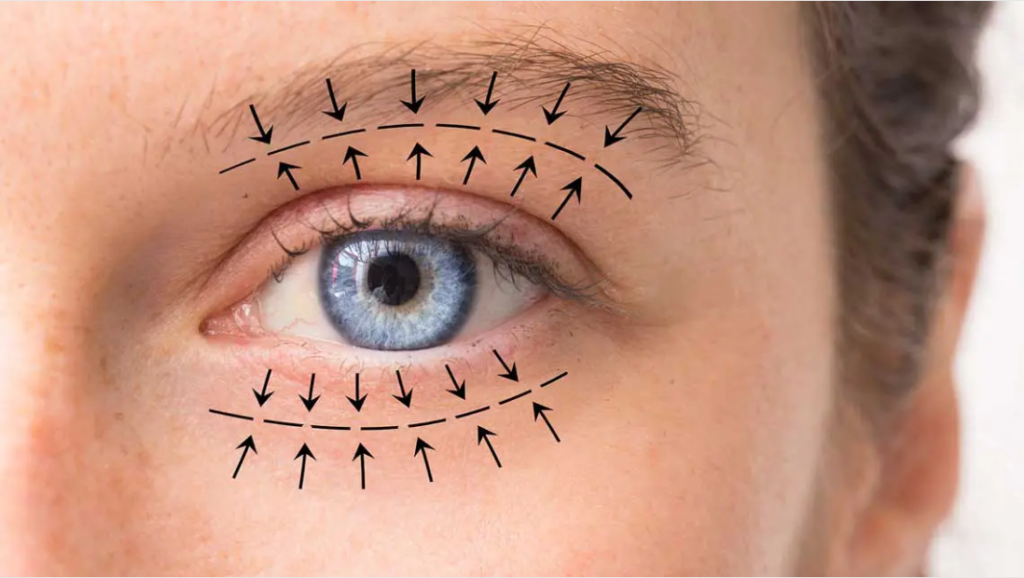
RISKS & SIDE EFFECTS
Upper eyelid filler is generally a safe procedure with few risks. However, as with any system, there are potential side effects to be aware of. The typical side effects include but are not limited to, swelling, bruising, and redness. They are usually temporary and can easily be treated if they occur.
RESULTS
The results of upper eyelid filler can last anywhere from 6 months to a year, depending on the type and amount of product used. Results can be seen immediately as the filler begins to volumize and lift the area. Over time, additional results will be visible as the product reduces wrinkles, dark circles, and puffiness.
The comprehensive approach to achieving dramatic results with a natural look and feel is a combined approach with hyaluronic acid filler placement, muscle relaxing injection and topical pharmacology. It requires using non-invasive procedures, such as lasers and chemical peels. As each individual is unique, success and longevity will depend on the type of product used and the medical professional’s expertise in performing the procedure.
Hyaluronic acid fillers can provide immediate results but will eventually dissolve over time. Muscle relaxing injections can produce long-lasting results but freeze facial muscles and be too intense for some people. Chemical peels and lasers can help reduce discoloration or pores and bring about a smoother skin texture, but they can also lead to potential complications when not performed correctly.
It is essential to consult a qualified and experienced medical practitioner familiar with the anatomy of the face and can customize the treatment plan according to your individual needs. The natural look you desire can be achieved, but taking a safe and gradual approach with treatments that can be countered if the results are too dramatic is critical.
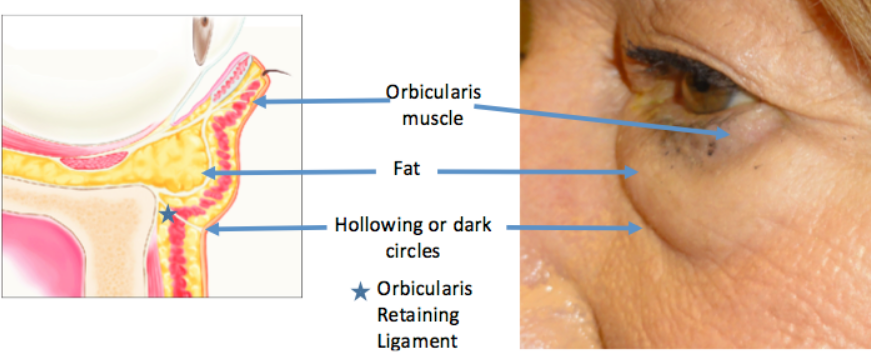
ALL ABOUT EYE FILLERS
Eye fillers are a popular cosmetic treatment that can minimize wrinkles and fine lines around the eyes. Most eye fillers are made from hyaluronic acid, a naturally-occurring substance that helps keep the skin hydrated.
Eye fillers are typically injected into the skin around the eyes using an excellent needle. The process is usually quick and relatively painless; the results can last several months. If you’re considering getting eye fillers, consult a qualified professional to ensure proper treatment.
Eye fillers are a popular way to improve the appearance of the eyes. Fillers can be used to correct a variety of issues, including wrinkles, dark circles, and hollow eyes. Many different fillers are available, and the best style for you will depend on your needs.
For those interested in eye fillers, scheduling a consultation before plastic surgery is essential. This can help ensure you receive the best, most effective results possible.
DERMAL FILLERS FOR UPPER EYELIDS
The use of dermal fillers can enhance the upper eyelids’ looks. They can help fill in wrinkles and fine lines and improve skin tone and texture. Fillers can also help to lift the eyelids and make them look more youthful.
Fillers are injected beneath the skin using a fine needle. The exact placement of the injections will depend on the individual’s needs. The doctor gently lifts the skin and inserts the needle into the desired area. Also, treat several areas, including the upper eyelid skin, lower eyelid, and crow’s feet. They can also be used to improve the appearance of scars.
There are various dermal fillers available, each with its advantages. The type of filler used will be based on the individual’s needs and desired results.
Dermal filler injection results are not permanent but can last several months or even years. The time the results last will depend on the individual’s skin type and metabolism. Joint dermal fillers include hyaluronic acid, calcium hydroxyl apatite, poly-L-lactic acid, and polymethyl methacrylate. These fillers can reduce wrinkles and lines, enhance lips and cheeks, and fill scars.
The cost of fillers can vary. Generally, soft-tissue fillers cost about $200-$1,000 per syringe. Prices may be higher for more extensive treatments.
The potential risks associated with dermal fillers include bruising, swelling, redness, lumps and bumps, and allergic reactions. These issues are usually resolved with time, but if you are concerned about possible risks, speak to your healthcare provider.
BENEFITS OF FILLER FOR UPPER EYELID HOLLOWING
Upper eyelid hollowing can be a complex problem to solve. The skin surrounding the eyes is fragile, and the area is challenging to treat with standard injectable fillers. However, certain fillers are specifically designed for upper eyelid hollowing, and these can be very effective in treating the condition.
Some of the benefits of filler for upper eyelid hollowing include the following:
– natural-looking results
– long-lasting results
– minimal side effects
– non-invasive
– quick and easy treatment
– minimal risks
– improved facial symmetry
– immediate results
– no downtime or recovery period
Fillers can help to improve the appearance of the eyelids and can also help to improve vision and reduce the appearance of wrinkles. There are many benefits to fill for upper eyelid hollowing.
Various filler options are available, and each has its benefits and risks. Speak with your doctor to determine if the filler is suitable for you.
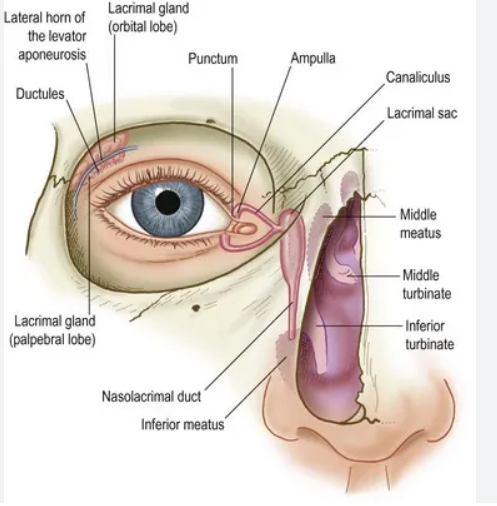
HOW LONG WILL THE TREATMENT LAST?
Upper eyelid filler is a nonsurgical cosmetic procedure that can temporarily smooth wrinkles and creases on the upper eyelids. The results of upper eyelid filler are not permanent, and the length of time that the effects last vary from person to person and depends on many factors such as skin type, age, and lifestyle.
In general, most people can expect to see the results of their upper eyelid filler for six to nine months. However, some factors can affect the longevity of the results, such as the type of filler used, the placement of the injection, and the individual’s metabolism.
Upper eyelid filler, or “eyebrow Botox” is a popular non-invasive cosmetic procedure that can help improve your eyebrows’ appearance. The treatment works by injecting filler into the upper eyelid to lift the brow and create a youthful appearance.
The effects of upper eyelid filler are typically not permanent, and the treatment must be repeated every few months to maintain the results. Typically, results from an eyelid filler injection can last anywhere from six to nine months, though touch-ups may be required to maintain the desired effect.
COST OF EYELID FILLERS
The cost of eyelid fillers can vary depending on the filler used, the amount needed, and the geographical location. The typical filler cost is usually $600-$1,200 per syringe. However, some patients may require more than one syringe to achieve the desired look, depending on the type of filler used.
For example, Restylane generally costs less than Juvéderm. The cost of fillers is also affected by how much is needed to achieve the desired result.
The average amount needed for most people is 1-2 syringes, but this can vary depending on the individual. Finally, geographical location also plays a role in the cost of fillers, with prices generally higher in larger cities.
.
A filler for the upper eyelid can range from $600 to $2,000. The price determined on the size of the treated area, the type of filler used, the number of sessions required, and the geographical location. Risks associated with upper eyelid filler include bruising, swelling, and infection. Results typically last for six to 12 months.
The cost of eyelid fillers can be expensive. However, there are a few ways to help offset the cost. Many providers offer discounts for first-time patients or multiple syringes. Additionally, some insurance companies provide coverage for cosmetic procedures like eyelid fillers. If you are considering getting eyelid fillers, ask about discounts and coverage to help offset the cost.
VISION LOSS
This procedure is used to correct age-related vision loss. It is also sometimes called upper eyelid blepharoplasty. The most likely cause of this condition is drooping upper eyelids, loose skin, and wrinkles creating the appearance of tiredness or even heaviness in the upper lids, which can interfere with your field of vision.
Upper eyelid filler can correct this condition and improve your vision. The process is relatively safe and has a high success rate. The results are usually temporary, but they can last for several years.
While the results of upper eyelid filler can be theatrical, it is crucial to understand the risks and potential side effects before proceeding with the procedure. This article will provide all the details you need to know about upper eyelid filler, including the risks and possible results.
We will also look at alternatives to upper eyelid filler and provide tips for achieving successful results.
The most common risks associated with upper eyelid filler are the risk of infection and nerve damage. The procedure can also cause bruising, swelling, and redness, usually temporarily. In rare cases, the filler can migrate to other facial features, such as the cheek or lip, resulting in an unnatural appearance. There is also a risk of allergic reaction to the filler.
When done correctly and by an experienced practitioner, the results of upper eyelid filler can be theatrical. After the filler is injected, the full effects will take several weeks to become visible.
Depending on the amount and type of filler used, the effects can last up to a year or more. The results are not guaranteed, and the amount and type of filler used will impact the outcome.
SKIN NECROSIS
The process is usually safe, and the results are generally temporary. However, some risks are associated with the procedure, including the possibility of skin necrosis.
Skin necrosis is a severe complication that can occur after any cosmetic procedure. It happens when the tissue dies due to a lack of blood supply. Skin necrosis can lead to permanent scarring and disfigurement.
Skin necrosis is a rare but severe complication that can occur after any injectable procedure, including upper eyelid filler. It is essential to understand the risks of any policy before undergoing treatment.
The results of the procedure are typically temporary and last for several months. Some different types of fillers can be used for this procedure, and the type used will depend on the desired result.
The risks of upper eyelid filler include bruising, swelling, and infection. There is also a small risk of skin necrosis, a rare but severe complication. Skin necrosis occurs when the blood supply is cut off, and the skin dies.
It can occur after any injectable procedure, but the risk is higher with upper eyelid filler because of the sensitive nature of the skin in this area.

WHO CAN BENEFIT FROM HOLLOWNESS UPPER EYELID TREATMENT?
Upper eyelid hollowness can be a noticeable problem for some people, a condition characterized by sunken upper lids impacting their appearance and quality of life. The good news is that the treatments available can help improve the appearance of the upper eyelids.
But who can benefit from upper eyelid hollowness treatment? The best candidates for this type of treatment are those with moderate to severe hollowness in their upper eyelids. This can often be caused by aging, genetics, or medical conditions such as thyroid problems or inflammatory disorders.
Upper eyelid hollowness can affect both men and women of all ages. However, it is most common in older adults. This condition can cause the upper eyelids to become sunken and hollow, giving the person a tired and aged appearance. Upper eyelid hollowness can also make it challenging to apply makeup or see correctly.
However, tear trough deformity can also occur in the upper lid/brow area. Injecting volume with eyelid fillers into these hollows can create a softer, more youthful look with natural-looking results.
Care must be taken when giving injections for this area, and it’s crucial to avoid the angular vessels located medially as well as stay away from injecting too much filler into thin tissues, such as the pretarsal eyelid, which has a higher chance of causing lumpiness and discoloration due to what’s known as the Tyndall effect.
If you are self-conscious about your appearance due to upper eyelid hollowness, you may be a good candidate for upper eyelid hollowness treatment. This treatment can help to restore the natural contours of your upper eyelids, giving you a more youthful and refreshed appearance.
HOW WILL I LOOK STRAIGHT AFTER YOU?
This non surgical procedure creates a more youthful appearance, which involves injecting a filler into the upper eyelid to add volume and smooth out wrinkles. It can also create a ‘lift’ effect by adding volume to the outer corners of the eyes. The process involves injecting a filler into the upper eyelid to add volume and smooth wrinkles.
Upper eyelid fillers are typically made from hyaluronic acid, which occurs naturally in the body. This type of filler is temporary and must be re-injected every six to twelve months to maintain the results.
Patients often asked specialists, “How will I look straight after you?”.
Immediately after the treatment, you may have some redness and swelling at the injection sites. This is normal and will resolve within a few hours. You may also have bruising, which will determine over the next few days.
It is vital to note that it may take up to two weeks for the full results of your upper eyelid filler to become visible. Please be patient and avoid any strenuous physical activity during this period.
Some advice would be to avoid rubbing your eyes, wear contact lenses, and exercise for the first 48 hours. You should also avoid sun exposure and direct heat, such as hot baths and saunas, for the first 48 hours. After this time, it is generally safe to resume all normal activities.
Upper eyelid filler is a quick and easy way to give you an eyelid lift, and it’s an excellent option for those who don’t want to undergo eyelid surgery. The results are immediate, and you can expect to see a noticeable difference in the appearance of your eyes. Most people can return to their daily activities after the treatment.